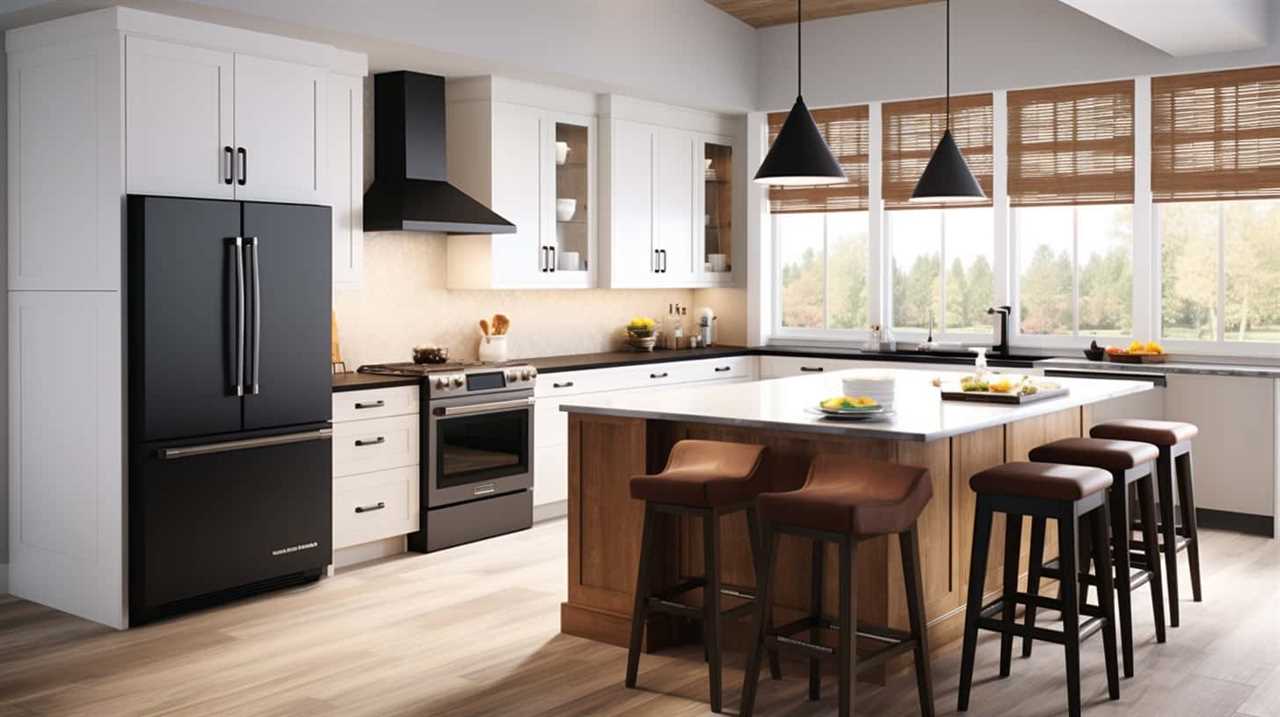In the realm of household appliances, the debate on whether they operate on alternating current (AC) or direct current (DC) power frequently surfaces. To truly comprehend this subject, it is essential to explore the distinctions between AC and DC power, and the devices that depend on each type.
This discussion will explore the common household appliances and their respective power sources, shedding light on the advantages of both AC and DC power. Additionally, we will touch upon the possibility of converting AC to DC power, offering insights into the prevalent power source used in most household appliances.
By the end, readers will have a comprehensive understanding of the power sources behind their trusted household appliances.
Key Takeaways
- AC is commonly used for household appliances due to its efficiency in transmitting power over long distances.
- DC is more efficient for battery-operated devices.
- AC can be easily converted to different voltages, making it suitable for various devices.
- AC is considered safer for humans due to its periodic drop in voltage.
Understanding AC and DC
To comprehend the functioning of household appliances, it is essential to grasp the distinction between alternating current (AC) and direct current (DC). AC and DC are the two primary forms of electrical power.
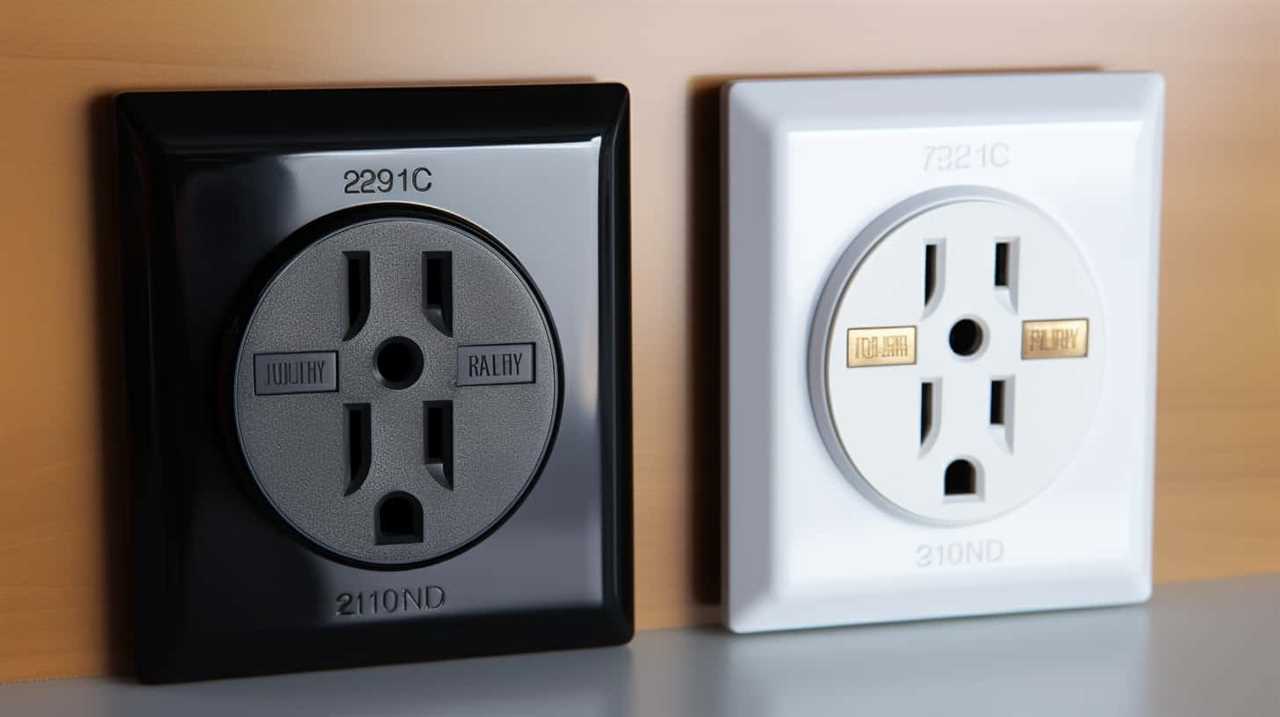
AC is a type of current that continuously changes direction, while DC flows in only one direction. Understanding the basics of electrical power is crucial when considering the efficiency of AC and DC.
AC is the more commonly used form of power for household appliances due to its ability to transmit power over long distances more efficiently. AC power can be easily converted to different voltages, making it suitable for various devices.
On the other hand, DC power is more efficient for certain applications, such as battery-operated devices, as it eliminates the need for conversion.
AC Vs DC: What’s the Difference
AC (alternating current) and DC (direct current) are two different electrical currents used for power transmission and consumption. Understanding the difference between AC and DC is crucial in determining the efficiency of power transmission. Power transmission efficiency, voltage and current direction, and safety considerations are key points to consider when comparing AC and DC.

The efficiency of power transmission is affected by the type of current being used. AC is known for its ability to be transmitted over long distances without significant loss of power. This is because AC can be easily converted to higher or lower voltages using transformers. On the other hand, DC suffers from higher power losses over long distances, making it less efficient for power transmission.
The direction of voltage and current flow is also different between AC and DC. In AC, the voltage and current continuously change direction, oscillating back and forth. This constant change in direction allows for the use of transformers, which are essential for voltage conversion. In DC, the voltage and current flow in a single direction, making it suitable for applications such as batteries and electronic devices.
Safety considerations are also important when comparing AC and DC. AC is generally considered to be safer for humans since its voltage periodically drops to zero, reducing the risk of electrical shock. However, AC can still cause serious harm if not handled properly. DC, on the other hand, poses a higher risk of electrical shock since its voltage remains constant. It is important to take precautions and follow safety guidelines when working with either type of current.
Power Transmission Efficiency
Power transmission efficiency plays a crucial role in differentiating between AC and DC power. When it comes to power loss, AC transmission tends to have higher losses compared to DC transmission. This is primarily due to the resistance and inductance in the transmission lines, which cause power to be dissipated as heat.

To mitigate these losses, power factor correction techniques are employed in AC systems. Power factor correction involves the use of capacitors to reduce reactive power and improve the power factor, thereby optimizing the efficiency of power transmission.
On the other hand, DC transmission is known to have lower losses since it does not suffer from the same issues of reactive power. This makes DC transmission more efficient, especially over long distances.
Transitioning into the subsequent section about voltage and current direction, it is important to understand how these factors impact power transmission efficiency.
Voltage and Current Direction
Voltage and current direction play a significant role in differentiating between AC and DC power. Understanding this distinction is essential for comprehending the use of AC or DC in household appliances.

AC, or alternating current, is characterized by the continuous reversal of the direction of current flow. This constant change in current direction allows for the efficient transmission of electricity over long distances.
On the other hand, DC, or direct current, flows in a single direction without any fluctuations. It is commonly used in battery-powered devices and electronic circuits.
Voltage fluctuations, such as those caused by power supply irregularities, can affect the performance of appliances. To address this, power factor correction techniques are employed to enhance power quality and minimize voltage variations.
Understanding voltage and current direction is crucial for effectively using AC or DC power in household appliances.

Transitioning to the next section, safety considerations must also be taken into account.
Safety Considerations
When considering safety implications, it is important to distinguish between the alternating and direct current systems. AC and DC have different safety considerations due to their energy consumption and electrical hazards. Here are three key points to keep in mind:
- Electrical Hazards: AC systems can deliver a higher current at lower voltages, increasing the risk of electric shock. DC systems, on the other hand, can result in higher voltages, which can cause burns and muscle contractions. It is crucial to handle both AC and DC systems with caution to avoid electrical accidents.
- Energy Consumption: AC systems are more commonly used in household appliances due to their ability to transmit power efficiently over long distances. DC systems, however, are gaining popularity due to their lower energy loss during transmission. It is essential to consider the energy consumption of appliances to ensure safe and efficient operation.
- Safety Measures: Different safety measures are required for AC and DC systems. Grounding is crucial for AC systems to protect against electrical faults and reduce the risk of electric shock. For DC systems, additional measures such as circuit protection devices and proper insulation are necessary to prevent overcurrent and short circuits.
Understanding the safety considerations of AC and DC systems is vital to ensure the safe operation of household appliances and protect against electrical hazards.
Appliances That Use AC Power
Household appliances that utilize alternating current (AC) are essential for various daily tasks and functions. AC power is the standard form of electricity supplied to homes and businesses, and it is used by a wide range of common appliances.

Examples of appliances that use AC power include refrigerators, air conditioners, washing machines, dishwashers, televisions, and microwave ovens.
The benefits of AC power for these appliances are numerous. Firstly, AC power allows for efficient transmission of electricity over long distances, making it possible to supply power to homes and businesses from distant power plants.
Secondly, AC power can be easily converted to different voltage levels, allowing appliances to operate at the appropriate voltage.
Additionally, AC power can be easily regulated and controlled, ensuring the safe and reliable operation of household appliances.
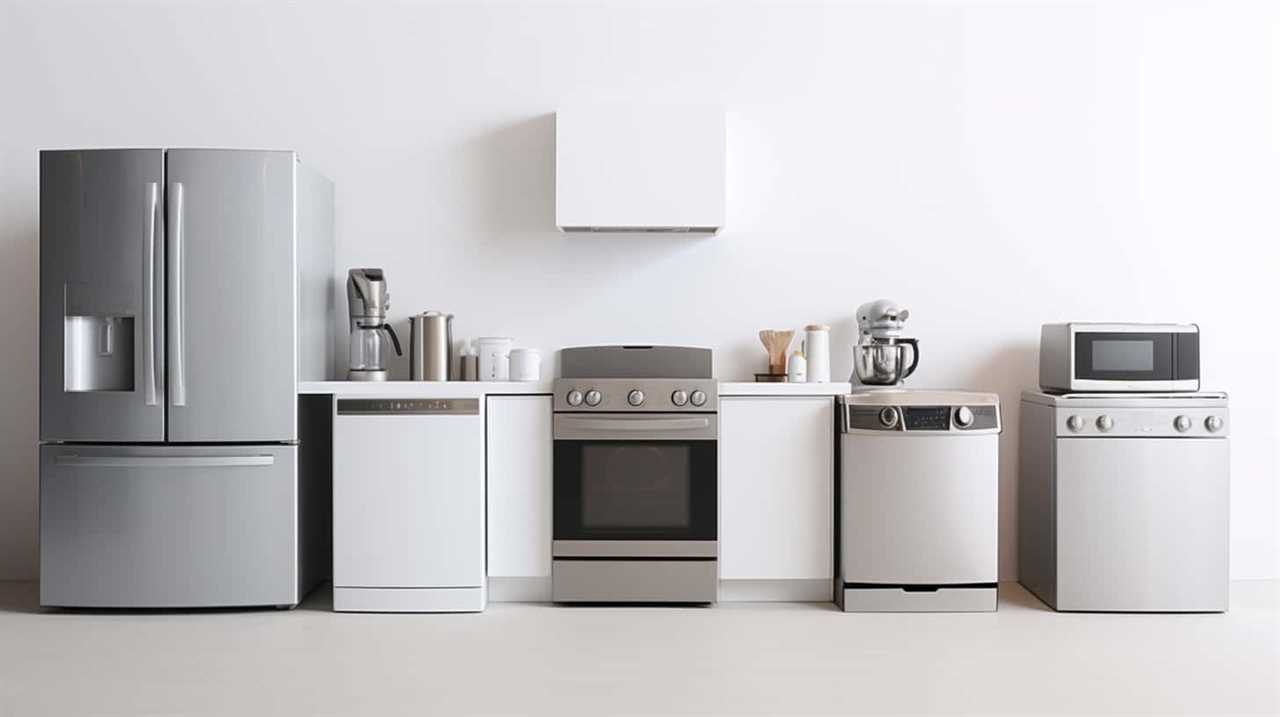
Appliances That Use DC Power
Appliances that utilize direct current (DC) power are becoming increasingly popular in households for their specific functions and energy efficiency. Here are three examples of appliances that benefit from DC power efficiency:
- LED Lights: LED lighting systems operate on DC power, making them highly efficient compared to traditional incandescent or fluorescent lights. LED lights consume less energy and have a longer lifespan, reducing both electricity bills and environmental impact.
- Solar Panels: Solar panels convert sunlight into DC power, which can be used to power a variety of appliances in the home. By directly harnessing DC power, solar panels eliminate the need for an AC-DC converter, increasing overall efficiency and reducing energy loss.
- Electric Vehicles (EVs): EVs are powered by DC batteries, allowing for more efficient energy storage and consumption. By using DC power, EVs can avoid the energy losses associated with converting AC power to DC, resulting in increased mileage and reduced charging times.
Common Household Appliances and Their Power Source
To understand the power sources of common household appliances, it is important to examine the specific types of electricity they require. Most household appliances use alternating current (AC) as their power source. AC is the type of electricity provided by the power grid and is the standard form of electricity used in homes. However, some appliances, particularly those with small motors or sensitive electronics, may require direct current (DC) power. These appliances often come with an AC to DC converter or an adapter.
To further understand the power consumption and environmental impact of common household appliances, we can refer to the table below:
| Appliance | Power Source | Power Consumption | Environmental Impact |
|---|---|---|---|
| Refrigerator | AC | High | Moderate |
| Television | AC | Medium | Low |
| Washing Machine | AC | High | Moderate |
| Microwave Oven | AC | Medium | Low |
| Air Conditioner | AC | High | High |
This table provides an overview of the power source, power consumption, and environmental impact of common household appliances. It is important to consider these factors when choosing appliances to reduce energy consumption and minimize environmental impact.
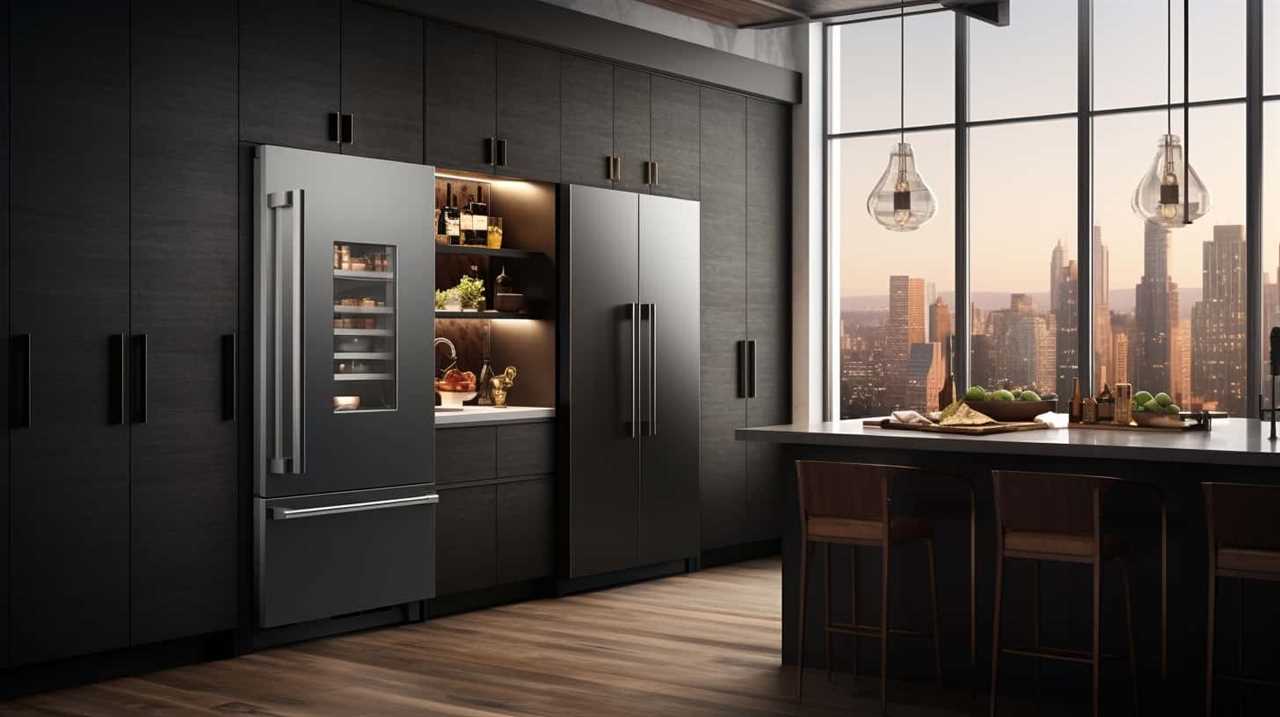
How AC Power Works in Appliances
AC power is the primary form of electricity used in household appliances. Understanding how AC power works in appliances is essential for anyone seeking mastery in this field.
Here are three key aspects of AC power generation and distribution:
- Power Generation: AC power is generated by power plants using alternators, which convert mechanical energy into electrical energy. This process involves rotating magnets within coils of wire, inducing a fluctuating current.
- Power Distribution: AC power is distributed through a network of power lines and transformers. Transformers increase or decrease the voltage level to ensure efficient transmission and safe usage in homes.
- Appliance Operation: Household appliances are designed to utilize AC power. They contain components like motors and transformers that require AC current to function properly. The AC power is converted and regulated within the appliance to provide the necessary electrical energy for specific tasks.
Understanding the principles of AC power generation and distribution is crucial for effectively using and troubleshooting household appliances.
How DC Power Works in Appliances
DC power, also known as direct current power, is utilized in certain household appliances for specific functions. While most appliances run on AC power, there are advantages to using DC power in certain applications.
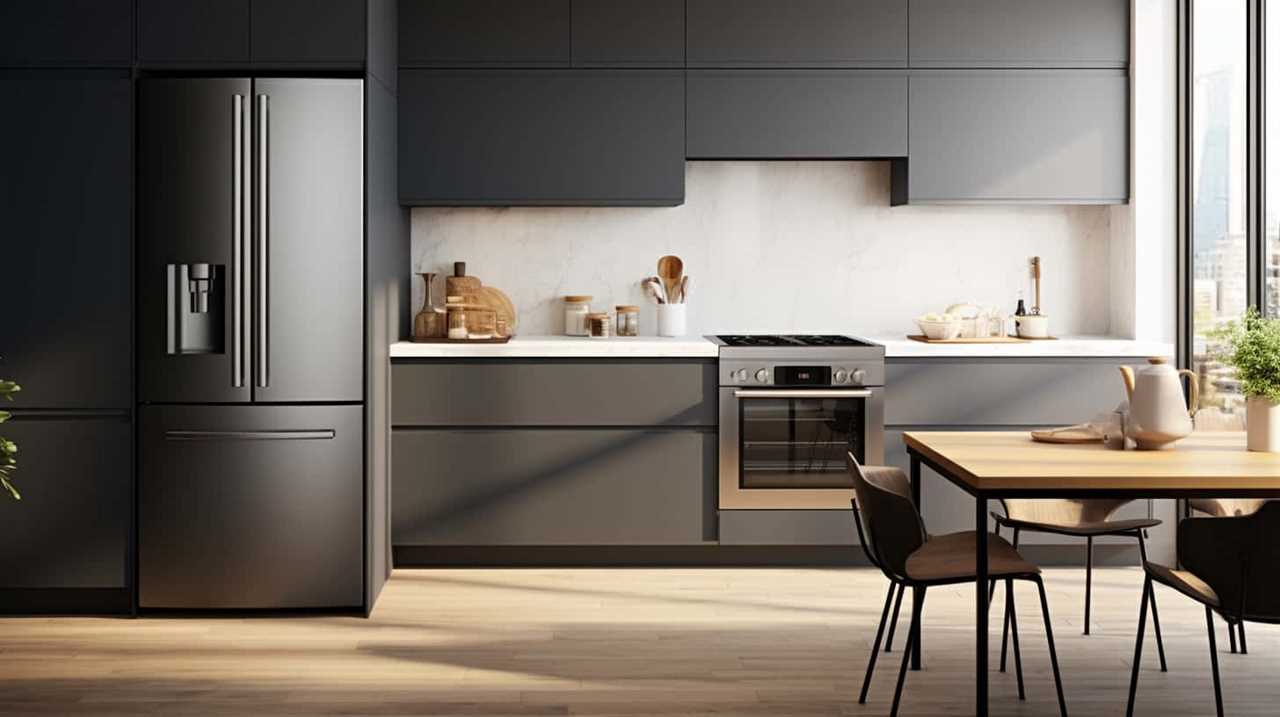
DC power is commonly used in small electronic devices, such as cell phones, laptops, and tablets, due to its ability to provide a steady and constant flow of electricity. This is particularly important for sensitive electronic components that require a stable power source.
In addition, DC power is also used in some household appliances like refrigerators, air conditioners, and lighting systems. These appliances often incorporate DC motors, which are more efficient and compact compared to their AC counterparts. DC power also allows for better control and regulation of speed and torque, making it ideal for appliances that require variable speed operation.
The table below highlights some of the advantages of DC power and its applications in household appliances:
| Advantages of DC Power | Applications of DC Power in Appliances |
|---|---|
| Steady and constant flow | Small electronic devices |
| Efficient and compact | Refrigerators, air conditioners |
| Better speed and torque control | Lighting systems |
Advantages of AC Power in Household Appliances
Using alternating current (AC) power in household appliances offers several advantages over direct current (DC) power. These advantages include:
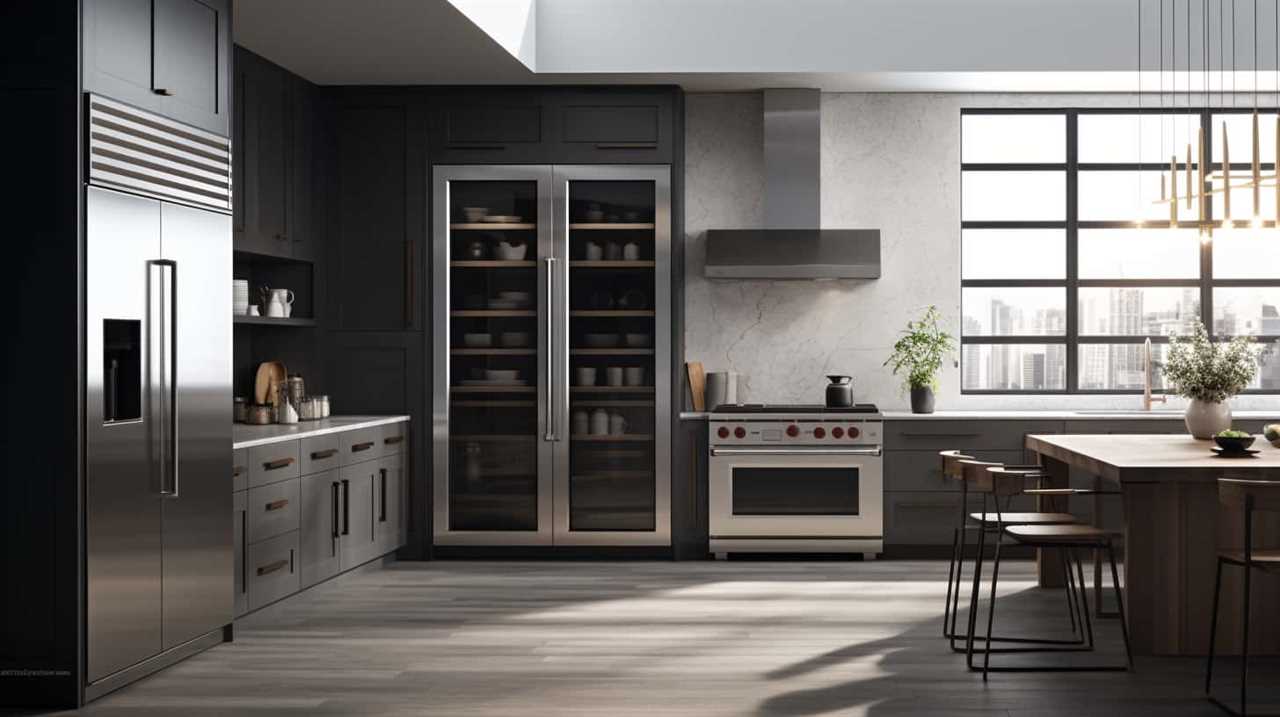
- Efficient Transmission: AC power can be easily converted to higher or lower voltages using transformers, allowing for efficient long-distance transmission. This is in contrast to DC power, which requires more complex and costly conversion processes.
- Cost-effectiveness: AC power distribution systems are more cost-effective to install and maintain compared to DC power systems. AC power allows for the use of smaller and lighter wires, reducing material and installation costs.
- Compatibility: AC power is compatible with a wider range of devices, as most household appliances are designed to run on AC power. The ability to easily switch between voltages and frequencies makes AC power more versatile and suitable for various appliances.
Advantages of DC Power in Household Appliances
DC power offers several advantages in household appliances.
Firstly, it is more energy efficient compared to AC power, as there is no need for power conversion. This results in reduced energy loss and lower electricity bills.
Additionally, DC power systems require less maintenance due to the absence of components like transformers and capacitors, leading to cost savings.
Lastly, DC power can be easily integrated with renewable energy sources such as solar panels and batteries, enabling households to become more self-sufficient and environmentally friendly.
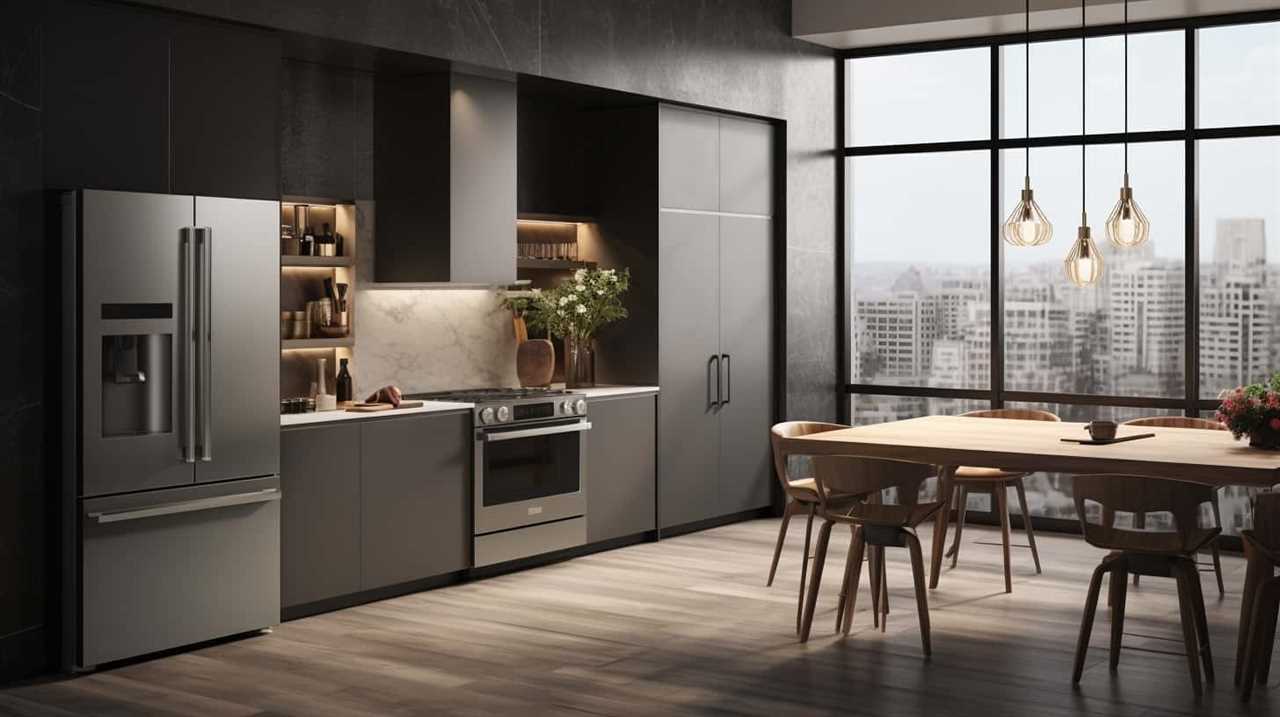
Energy Efficiency of DC
Household appliances that utilize direct current (DC) power offer significant advantages in terms of energy efficiency. These appliances are designed to convert the alternating current (AC) power supplied by the grid into DC power for their operation.
Here are three reasons why DC power applications can lead to energy savings:
- Reduced energy loss: Unlike AC power, DC power does not suffer from energy losses due to inductive reactance and resistance. This means that appliances running on DC power experience less energy loss during conversion and transmission, resulting in higher overall energy efficiency.
- Smaller power supplies: DC-powered appliances require smaller and more efficient power supplies compared to their AC counterparts. This reduces the energy consumed by the power supply itself and improves the overall efficiency of the appliance.
- Elimination of vampire power: AC-powered appliances often consume energy even when they are in standby mode, known as vampire power. DC-powered appliances can eliminate this energy waste by completely shutting off power when not in use, leading to significant energy savings.
Lower Maintenance Costs
One advantage of utilizing direct current (DC) power in household appliances is the potential for lower maintenance costs. Compared to alternating current (AC) power systems, DC power operates at a lower voltage, resulting in reduced wear and tear on appliance components. With less stress on the electrical system, DC-powered appliances generally require fewer repairs and have longer lifespans.
Additionally, DC power can contribute to reducing energy consumption, which not only lowers utility bills but also has a positive impact on the environment. By operating more efficiently, DC-powered appliances consume less electricity, leading to reduced greenhouse gas emissions from power generation. This lower energy consumption translates to lower maintenance costs as well, as the appliances experience less strain on their electrical systems.

The benefits of DC power extend beyond maintenance savings, as it also enables seamless integration with renewable energy sources.
Integration With Renewable Energy
The seamless integration of renewable energy sources is a significant advantage of utilizing direct current (DC) power in household appliances. Here are three reasons why DC power is advantageous when it comes to integrating renewable energy:
- Smart grid technology: DC power is compatible with smart grid technology, which allows for efficient communication and management of energy flow between renewable energy sources, household appliances, and the power grid. This enables optimal utilization of renewable energy and reduces wastage.
- Battery storage systems: DC power is well-suited for battery storage systems, which play a crucial role in storing excess renewable energy generated during peak production periods. These stored energy can then be used during times of high demand or when renewable energy sources are not readily available, ensuring a more reliable and continuous power supply.
- Efficient power conversion: By utilizing DC power in household appliances, the need for power conversion from AC to DC is eliminated. This reduces energy losses and increases overall system efficiency.
With the advantages of DC power in integrating renewable energy, it becomes evident why many are considering the switch from AC to DC power in household appliances.
Making the Switch: Converting AC to DC
To facilitate the transition from AC to DC, a conversion process is employed. Converting AC to DC involves transforming the alternating current (AC) voltage into a direct current (DC) voltage suitable for use in household appliances.

There are several AC to DC conversion methods, each with its own advantages and applications. One common method is rectification, which uses diodes to convert the AC signal into a pulsating DC signal.
Another method is the use of transformers and rectifiers to convert AC to DC. This method is often employed in power supplies for electronic devices.
Additionally, switching power supplies use high-frequency switching to convert AC to DC efficiently.
These conversion methods play a crucial role in enabling the use of DC-powered appliances and systems in households.
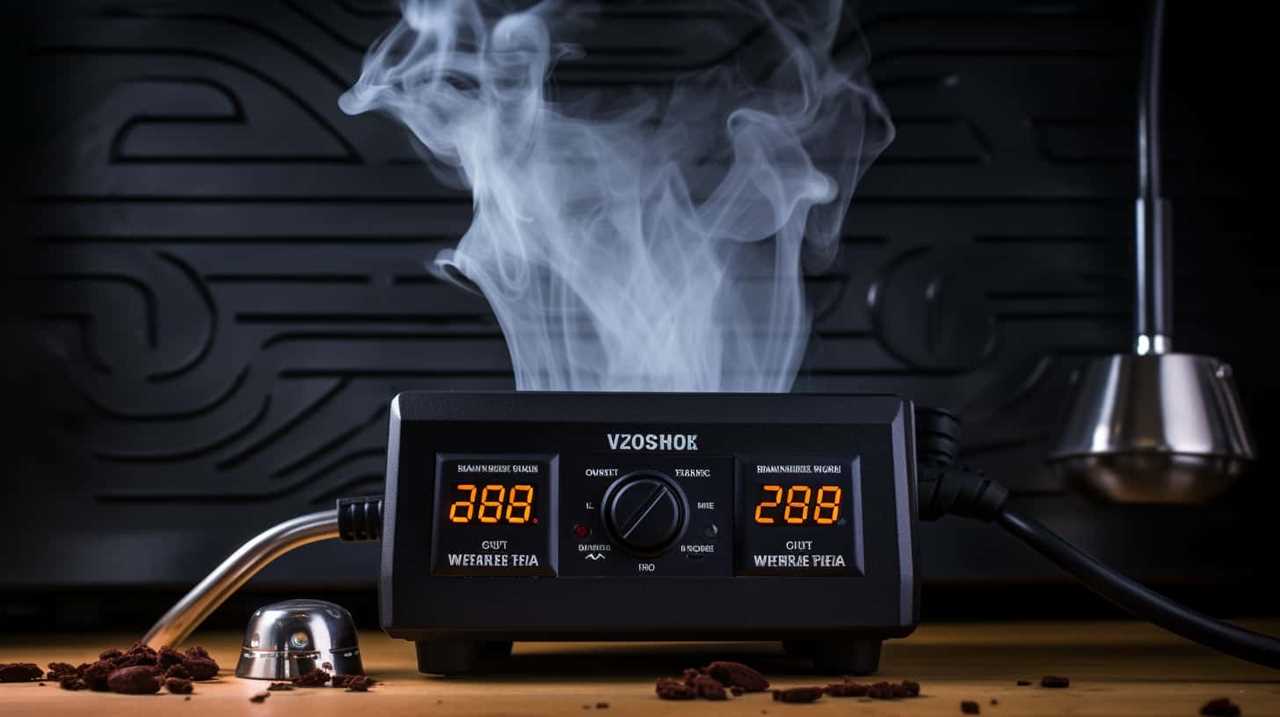
Conclusion: Which Power Source Is Used in Most Household Appliances?
Having discussed the various methods of converting AC to DC in the previous subtopic, let us now delve into the power source predominantly used in most household appliances.
When it comes to power source comparison, the majority of household appliances rely on AC (alternating current) for their operation. This is primarily because the electricity supplied to our homes is AC, making it more convenient and cost-effective for appliances to use the same power source. AC power allows for easy transmission over long distances and can be easily stepped up or down in voltage using transformers. Furthermore, using AC power minimizes the need for bulky and expensive power storage devices.
While some appliances, such as small electronics and certain motors, may require DC (direct current), the impact on energy consumption is generally minimal.
Frequently Asked Questions
Can I Use a Dc-Powered Appliance With an AC Power Source?
DC-powered appliances cannot be directly used with an AC power source. However, DC power offers advantages such as higher efficiency, lower energy loss, and better control. AC power, on the other hand, is more suitable for long-distance transmission and is widely used in household appliances.

Are There Any Advantages to Using AC Power in Household Appliances?
The advantages of using AC power in household appliances include its ability to efficiently transmit power over long distances, its compatibility with existing power grids, and its ability to easily convert to different voltages.
Can I Convert an Ac-Powered Appliance to DC Power?
Converting appliances from AC to DC power is possible, but it requires technical expertise and may void warranties. Benefits of using DC power include energy efficiency and compatibility with renewable energy sources.
Are There Any Disadvantages to Using DC Power in Household Appliances?
The use of DC power in household appliances can have drawbacks, such as limited availability of DC power sources, potential compatibility issues, and reduced appliance performance due to the need for additional DC-AC conversion.
What Are Some Common Household Appliances That Can Be Powered by Both AC and Dc?
Some common household appliances that can be powered by both AC and DC include televisions, refrigerators, and computers. DC powered appliances typically include smaller devices such as smartphones and portable chargers, while AC powered appliances are typically larger and require higher voltage.
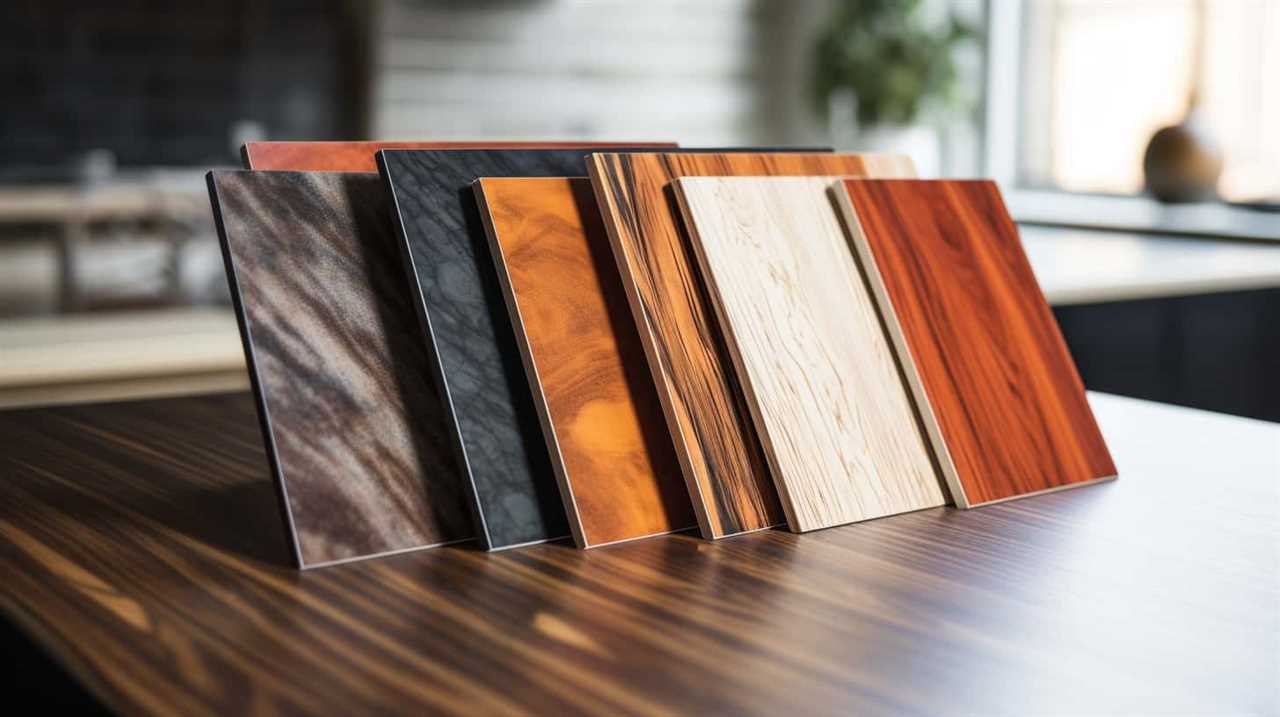
Conclusion
In conclusion, the power source used in most household appliances is alternating current (AC).
AC power offers several advantages such as its ability to be easily transmitted over long distances and its compatibility with the electrical grid.
While some appliances may use direct current (DC), they are typically limited to smaller devices and specialized applications.
Understanding the differences between AC and DC power is crucial in ensuring the efficient and safe operation of household appliances.
